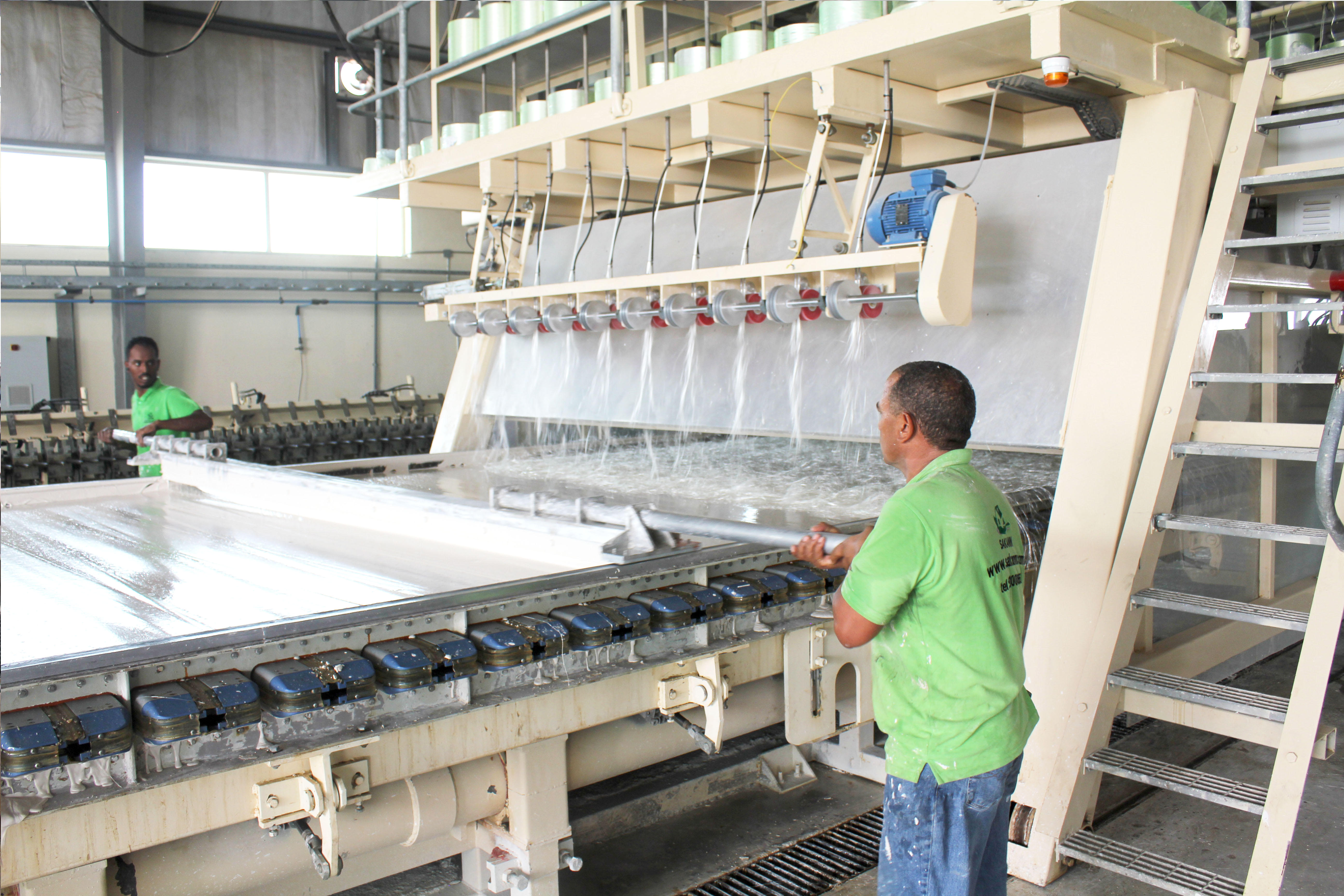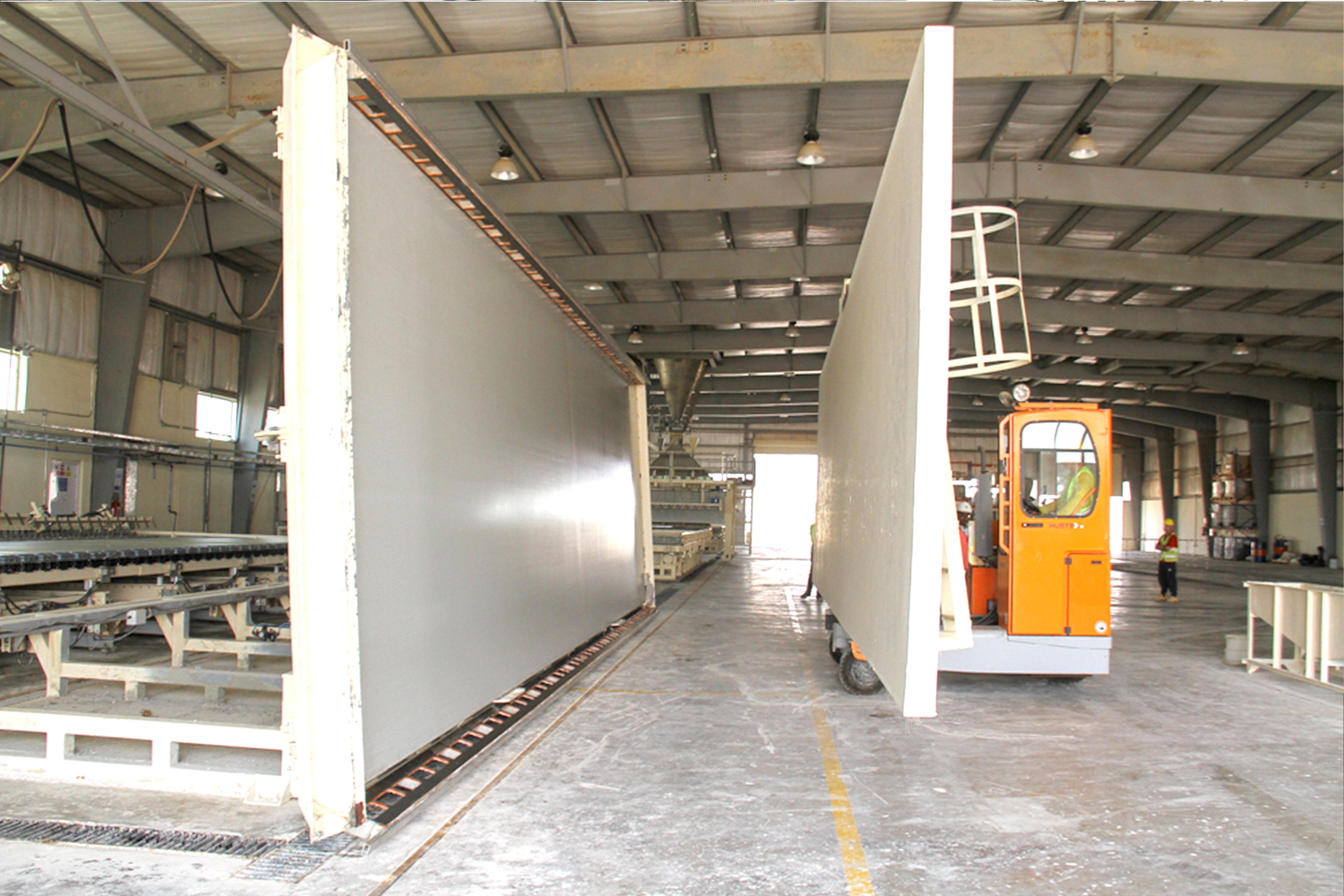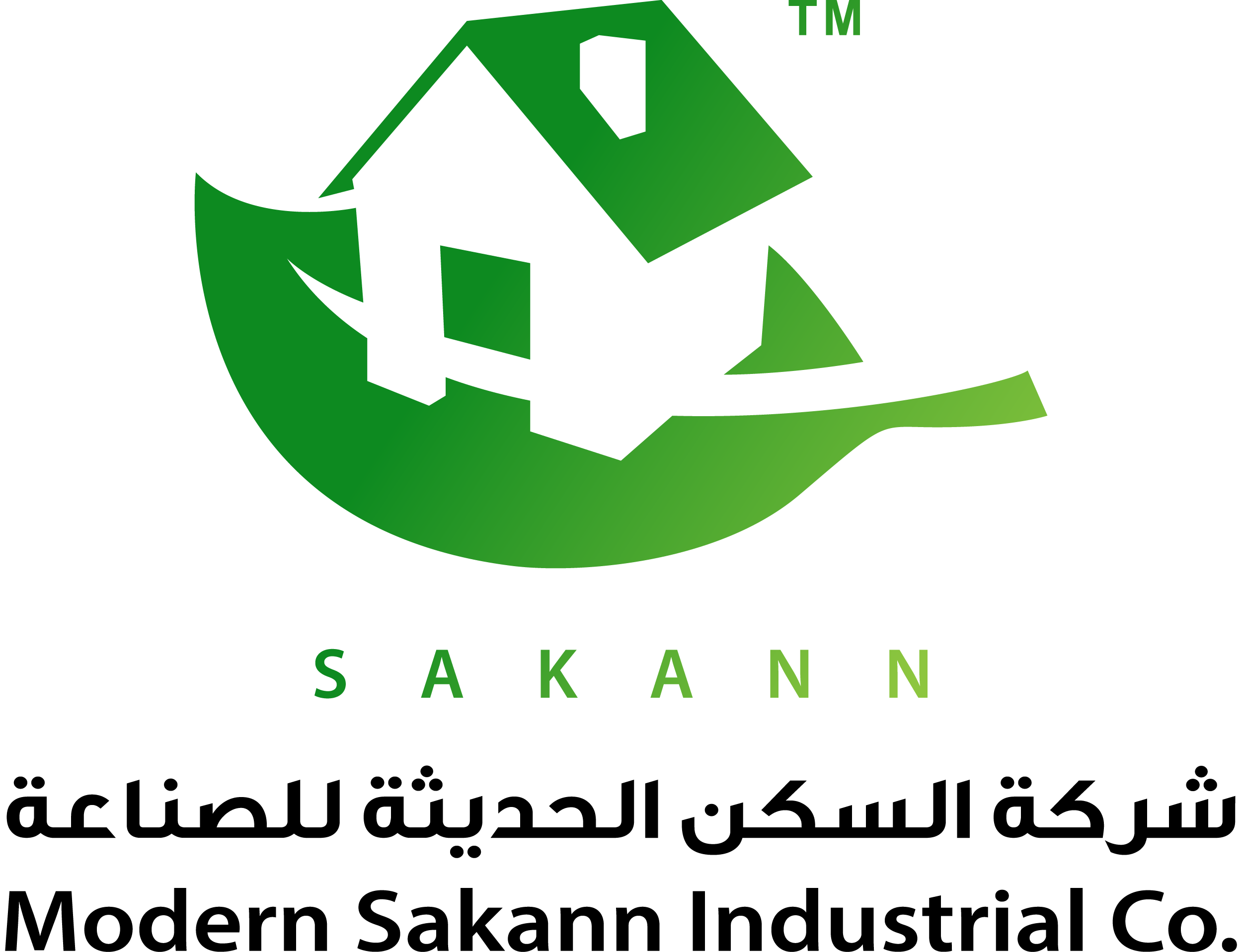Step One

The casting-table, in each computer-controlled plant, comprises a flat steel epoxy-coated surface with sides that are raised to contain the plaster when in the fluid state.
Prior to the commencement of the manufacturing process the casting table is first lightly greased. Commencing from the start position the crab assembly moves over the casting-table accurately dispensing the special plaster mix comprising water, Rapidflow gypsum-plaster, water repellents and additives, over the entire table to a depth of 15 millimetres.

Step Two
This plaster layer is lightly screeded after which the travelling crab assembly automatically chops and dispenses a predetermined quantity of glass-fibre rovings over the entire liquid-plaster surface. This layer of glass-fibre is then rolled into the plaster to position it centrally within the 15 millimetre thick skin to provide reinforcement to the plaster.


Step Three

In every 250 millimetre length of Rapidwall a 230 millimetre by 94 millimetre cell is formed using teflon coated removable plugs that are laid at right angles to the 12-metre panel. The core-table mechanism positions all 48 plugs over the plaster and glass-fibre layer on the casting table. The final quantity of plaster is dispensed onto the casting table filling between the plugs and forming the top skin of the panel.

Step Four
Using a mesh roller the surface of the Rapidwall panel is then rolled to position this final layer of glass-fibre centrally within the plaster top skin. Final screeding and smoothing of the cast is completed manually by two operators. To this point the process has taken only 20 minutes. After this, the panel is left to cure until the temperature and the consistency of the plaster allows final screeding.
Once the plaster has completed its initial set, a further 20 minutes, the core-table mechanism advances and locks onto the core formers and slowly withdraws them from the set panel.


Step Five

To remove the panel from the casting-table three perimeter edges of the casting table are opened and two panel-supports are extended. The table is then automatically tilted to approximately 88 degrees off vertical. The entire two-tonnes weight of the wet panel is taken by the bottom supports.
To this point, the entire process has taken 45 minutes.
Finally a multi-directional truck, fitted with a transfer frame, removes the Rapidwall panel from the tilted casting-table and places it either in air drying racks or in the Rapidcure drying oven for final curing prior to it being stored and ultimately cut to dimensions for installation on a specific building project.

Step Six
The elapsed time of the complete manufacturing process, including full curing in the Rapidcure dryer, is less than two hours for each panel.

